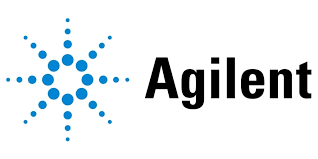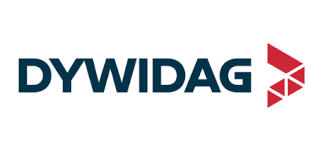Circular Economy Platforms
Published Date: 06 October 2025 | Report Code: circular-economy-platforms
Circular Economy Platforms Market Size, Share, Industry Trends and Forecast to 2033
This report provides an in‐depth analysis of the Circular Economy Platforms market covering key aspects, trends, and strategic insights backed by reliable data. Focusing on the forecast period from 2024 to 2033, the report highlights market size, CAGR, regional breakdowns, segmentation details, and future outlook, serving as a comprehensive resource for stakeholders.
| Metric | Value |
|---|---|
| Study Period | 2024 - 2033 |
| 2024 Market Size | $3.50 Billion |
| CAGR (2024-2033) | 7.2% |
| 2033 Market Size | $6.66 Billion |
| Top Companies | EcoCycle Solutions, GreenLoop Technologies |
| Last Modified Date | 06 October 2025 |
Circular Economy Platforms (2024 - 2033)
Circular Economy Platforms Market Overview
Customize Circular Economy Platforms market research report
- ✔ Get in-depth analysis of Circular Economy Platforms market size, growth, and forecasts.
- ✔ Understand Circular Economy Platforms's regional dynamics and industry-specific trends.
- ✔ Identify potential applications, end-user demand, and growth segments in Circular Economy Platforms
What is the Market Size & CAGR of Circular Economy Platforms market in 2024?
Circular Economy Platforms Industry Analysis
Circular Economy Platforms Market Segmentation and Scope
Tell us your focus area and get a customized research report.
Circular Economy Platforms Market Analysis Report by Region
Europe Circular Economy Platforms:
Europe is at the forefront of the circular transition, underpinned by strong regulatory measures and a high level of sustainability awareness. Market figures are projected to increase from 0.96 billion in 2024 to 1.83 billion by 2033, driven by investments in efficient recycling processes and renewable energy applications.Asia Pacific Circular Economy Platforms:
In Asia Pacific, market growth is stimulated by rapid industrialization and increasing environmental awareness. With market values projected to rise from 0.68 billion in 2024 to 1.30 billion in 2033, the region is witnessing significant investments in technology and infrastructure improvements for waste management and recycling initiatives.North America Circular Economy Platforms:
North America remains a pivotal market with values growing from 1.31 billion in 2024 to 2.49 billion in 2033. The region leverages advanced technology platforms and a proactive policy environment to drive innovation and sustainability in resource management.South America Circular Economy Platforms:
South America, reflecting trends seen in Latin America, is gradually embracing circular economy principles. The market is expected to grow from 0.27 billion in 2024 to 0.52 billion in 2033 with increasing government incentives and rising consumer demand supporting regenerative industrial practices.Middle East & Africa Circular Economy Platforms:
The Middle East and Africa are gradually emerging markets with growing investments in sustainable infrastructure. Valued at 0.28 billion in 2024, the market is expected to climb to 0.53 billion in 2033, supported by international collaborations and increased focus on resource conservation practices.Tell us your focus area and get a customized research report.
Circular Economy Platforms Market Analysis By Platform Type
Global Circular Economy Platforms, By Platform Type Market Analysis (2024 - 2033)
The by-platform-type segmentation focuses on digital, physical, and hybrid platforms. Digital Platforms, commanding a significant share with a market size growth from 2.15 billion in 2024 to 4.08 billion in 2033, are leveraging cloud computing, big data, and IoT to optimize lifecycle management. Physical Platforms, though smaller in size, contribute robustly with a size increase from 0.97 billion to 1.85 billion, emphasizing tangible processes in recycling and waste management. Hybrid Platforms provide an integrated approach combining digital efficiency with on-ground operations, growing from 0.39 billion to 0.73 billion over the forecast period. This segmentation highlights how different platform types are catering to varied market needs while collectively enhancing overall industry resilience.
Circular Economy Platforms Market Analysis By Industry Application
Global Circular Economy Platforms, By Industry Application Market Analysis (2024 - 2033)
Industry application segmentation covers key sectors including Textiles and Fashion, Electronics, Construction and Demolition, and Food and Agriculture. The Textiles and Fashion sector leads with significant market participation, recording a growth in size from 1.85 billion in 2024 to 3.52 billion in 2033, driven by innovative recycling and upcycling processes. The Electronics sector, with growing e-waste challenges, is expected to expand from 0.87 billion to 1.65 billion. Construction and Demolition segments emphasize the need for sustainable building practices, growing from 0.42 billion to 0.80 billion, while the Food and Agriculture segment focuses on reducing wastage and promoting regeneration, increasing from 0.37 billion to 0.70 billion. Each sector is increasingly adopting circular practices to improve sustainability while optimizing resource use.
Circular Economy Platforms Market Analysis By Business Model
Global Circular Economy Platforms, By Business Model Market Analysis (2024 - 2033)
The by-business-model segmentation distinguishes between Subscription-Based, Transactional, and Community-Based models. Subscription-Based Models, with market size climbing from 2.15 billion in 2024 to 4.08 billion in 2033, provide steady revenue streams and customer engagement, reflecting a mature market segment. Transactional Models, growing from 0.97 billion to 1.85 billion, emphasize the direct exchange of services and products while remaining agile to market fluctuations. Community-Based Models, though representing a smaller base with a size increase from 0.39 billion to 0.73 billion, harness network effects and collaborative consumption. These varied business models are critical in shaping how services are delivered, ensuring that circular economy initiatives can meet diverse consumer and business needs while driving long-term sustainability.
Circular Economy Platforms Market Analysis By Target User
Global Circular Economy Platforms, By Target User Market Analysis (2024 - 2033)
Segmentation by target user focuses on Businesses, Consumers, and Governments. The Businesses segment dominates with a market size growth from 2.15 billion in 2024 to 4.08 billion in 2033, underpinned by initiatives aimed at cost savings and enhanced operational efficiencies through sustainable practices. Consumers are increasingly aware of environmental impacts, leading to growth in their segment from 0.97 billion to 1.85 billion, thereby demanding transparent and sustainable practices. Governments, though smaller in terms of numeric size (growing from 0.39 billion to 0.73 billion), play a pivotal regulatory and supportive role by designing policies that encourage large-scale adoption of circular initiatives. This segmentation ensures that tailored strategies are developed to optimize value for every stakeholder category within the circular economy.
Circular Economy Platforms Market Trends and Future Forecast
Tell us your focus area and get a customized research report.
Global Market Leaders and Top Companies in Circular Economy Platforms Industry
EcoCycle Solutions:
EcoCycle Solutions is a pioneer in leveraging technology for sustainable resource management. Focusing on digital integration and closed-loop recycling systems, the company has consistently driven innovations in the circular economy space, partnering with public and private sectors to set industry benchmarks for environmental efficiency.GreenLoop Technologies:
GreenLoop Technologies specializes in providing hybrid platform solutions that combine digital intelligence with physical recycling processes. With cutting-edge IoT applications and robust supply chain integrations, the company is at the forefront of enabling a transition to more sustainable and resource-efficient industrial practices.We're grateful to work with incredible clients.









FAQs
What is the market size of Circular Economy Platforms?
The Circular Economy Platforms market is projected to grow from $3.5 billion in 2024 to an estimated size by 2033, showcasing a robust CAGR of 7.2%. This growth signifies a steadily increasing demand for sustainable solutions in various industries.
What are the key market players or companies in the Circular Economy Platforms industry?
Key players in the Circular Economy Platforms include innovative startups and established companies across industries. They enhance sustainable practices, harnessing technology to facilitate a circular economy model, yet detailed company names and contributions will require further research.
What are the primary factors driving the growth in the Circular Economy Platforms industry?
Growth factors in the Circular Economy Platforms include increasing environmental regulations, consumer demand for sustainable products, innovations in waste management technologies, and corporate sustainability initiatives driving the need for circular economy solutions.
Which region is the fastest Growing in the Circular Economy Platforms?
North America is the fastest-growing region for Circular Economy Platforms, expected to expand from $1.31 billion in 2024 to $2.49 billion by 2033. Europe and Asia Pacific also show significant growth trajectories in the same period.
Does ConsaInsights provide customized market report data for the Circular Economy Platforms industry?
Yes, ConsaInsights offers customized market reports for the Circular Economy Platforms industry, allowing stakeholders to access tailored insights and detailed analysis that align with their strategic objectives and market needs.
What deliverables can I expect from this Circular Economy Platforms market research project?
Expect comprehensive deliverables including detailed market size data, growth projections, competitive analysis, regional insights, and segmented data tailored to businesses, consumers, and government stakeholders in the Circular Economy Platforms sector.
What are the market trends of Circular Economy Platforms?
Current trends in the Circular Economy Platforms include the rise of subscription-based and community-based models, increasing investment in digital platforms, and a focus on sustainable materials in textiles, electronics, and construction sectors.
